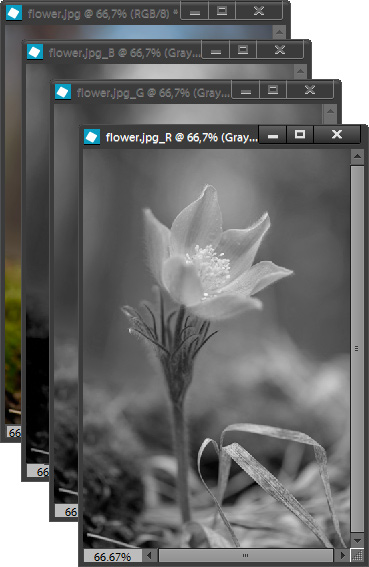Splitting Channels into Separate Images
![]() The "Split Channels" command divides the Red, Green, and Blue channels of a RGB image into independent grayscale documents that can be saved as separate files.
The "Split Channels" command divides the Red, Green, and Blue channels of a RGB image into independent grayscale documents that can be saved as separate files.
In the example shown in the screenshot, the color image "flower.jpg" has been split to three grayscale images: "flower.jpg_R" ("_R" stands for "Red channel"), "flower.jpg_G" (Green), and "flower.jpg_B" (Blue).
Also, the resulting documents can be edited independently and then merged into a color image. The advantage of this method compared to the channel selecting is that you can use layers and other advanced editing techniques.
Scrutinizing the resulting grayscale images suggests yet another application of this method. Very often, one of the channels (as a rule, the Green one) proves to contain the most detail of the source image, the second (usually, the Red) channel provides the contrast map, while the third (Blue) channel is responsible for the noise.
This means that we can, for example, apply a noise reduction filter to the "blue" image "flower.jpg_B" without affecting the detail contained in the "flower.jpg_G" document.
After editing the grayscale "channel" images we can reunite them into a new color picture by using the "Merge Channels"  command.
command.
